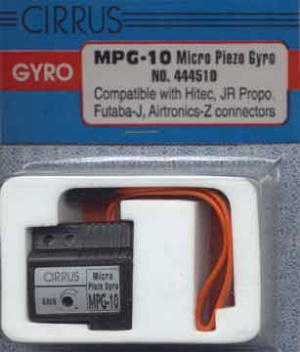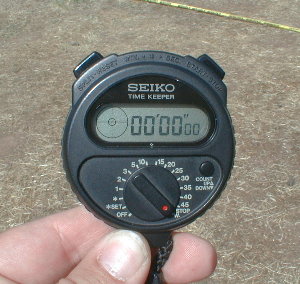|
International Hand Launch Glider Festival June 3-4, 2001 |
|||
| Gyros
The hit technical items of the IHLGF was the use of gyros by the pilots. Not all pilots had them. However, some pilots checked every hobby shop within 100 miles of the contest, buying every one in stock. They were resold rapidly at the contest. So why use a Gyro? The gyro is mounted in the plane, attached then adjusted to control the rudder. During the discus launch, the flyer is holding one wingtip and twirling around during the launch. When the plane is let go, the inboard pegged tip is traveling slower than the outside tip and the plane when released has a strong tendency to roll left, that is if the peg is on the left wingtip. To compensate for the left roll, the pilot adds opposite rudder in order to make the plane roll in the opposite direction. However, as the plane rolls to correct itself, it over compensates and starts to roll right, hence the pilot must correct the plane to make it roll back left. During this process the planes oscillates and this oscillation must be stopped quickly by the pilot. It has been qualitatively found that for each oscillation the plane looses 10 ft of height due to the drag of the process. The faster the oscillation is stopped the higher the launch. The gyro is used to reduce the oscillations as it reacts faster than the pilot. Using the gyro, and depending on the pilot's throwing ability, the plane can launch 30+ feet than a plane without a gyro. Does the gyro have to be used? No. If
the control surfaces are large, and designed correctly, little if any oscillation
of the plane during the launch occurs, and the gyros is not
needed. Most pilots will use a gyro, as all the height that can
be had is desired. |
|||
|
|
MPG-10 Micro Piezo Gyro S,J,Z,JR Plug Specifications: Dimensions: 26.0 x 27.0 x 11.3 mm Weight: 7.0 grams with plastic case, 4.8 grams without plastic case Power supply: 4.8 to 6.0 Volts Current draw: 10mA Gain adjustment: single rate, non remote Operating Temperature: -5 c to +60 c Applicable R/C systems: Futaba, JR, Hi-tec, Airtronics, Multiplex, GWS To Order: Part No.444510 PG-03J Cirrus MPG-10 Micro Piezo Gyro S,J,Z,JR Plug $49.99 Contact hobby people at http://www.hobbypeople.net. The link to the web site is http://www.hobbypeople.net/gallery/444510.htm for the gyro pictured here from Hobby People. |
||
|
Stop Watch Normally timing of flights can easily be done with the most common of stopwatches. However, the HLG flight tasks require the rapid stopping of the time, recording of the time, resetting of the stopwatch and restarting of the stopwatch, all within approximately 4-5 seconds. Most stopwatches are hindered by the the reset function, and the user must hold the reset button down for several seconds before the chronometer is zeroed out. Nearly all of the HLG pilots have one or more of these stopwatches. One for the timing of the flight and one to keep track of the flight window. These watches are hard to come by and cost approximately $100. There is a nearly identical Lorras stopwatch for approximately $45. However this user does not know the source. This user recommends the Seiko watch as it is easy to use and rest. The small dial in the front permits the stopwatch to be set up quickly for minutes in a countdown mode. |
|||
|
|
|||
|
©2001 Crawford-Adams Enterprises All Right Reserved. |
|||

